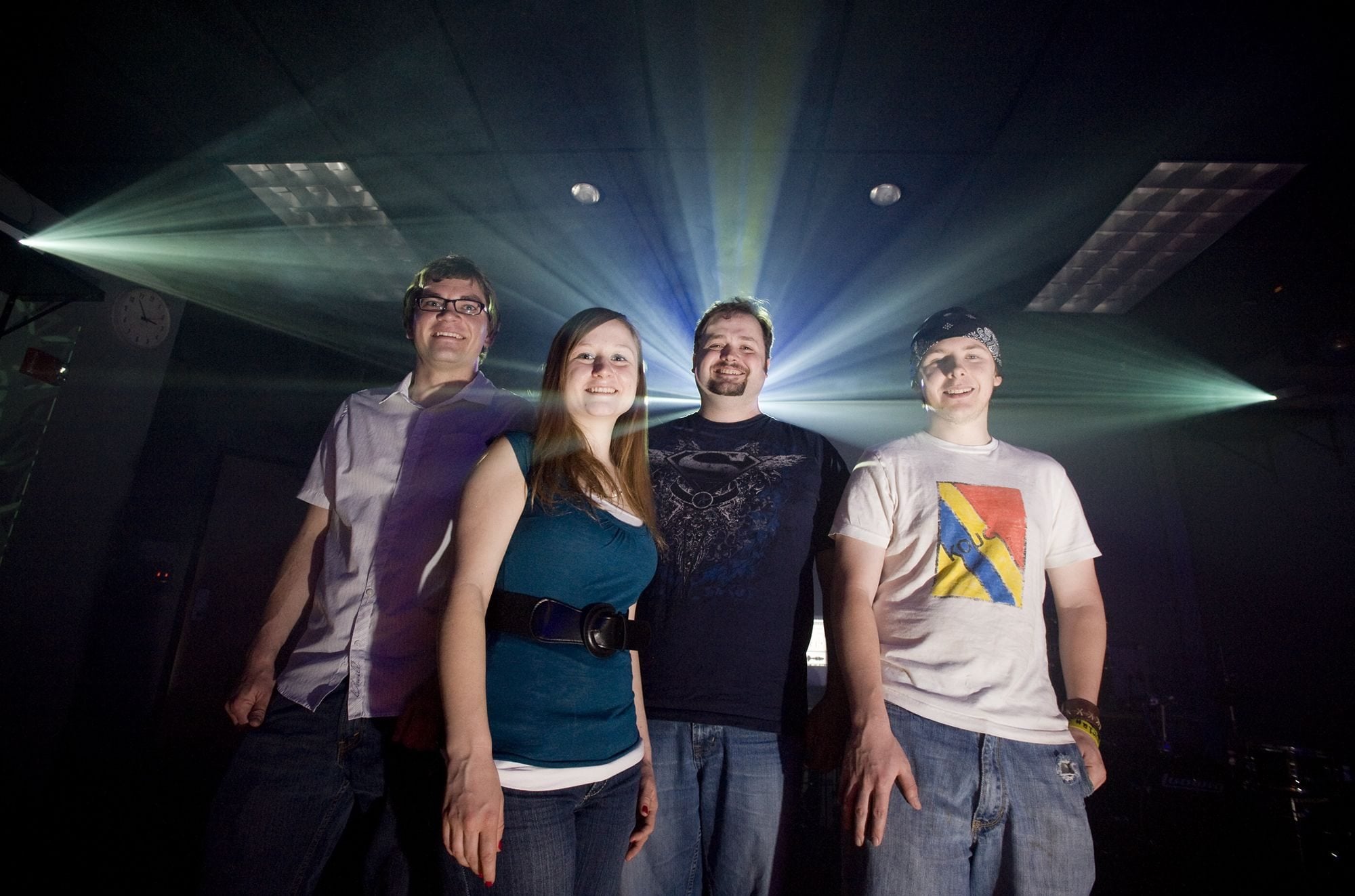Imagine playing a video game where you’re the character and the virtual environment being explored is an actual room, not an animated world confined by a television or computer screen.
Washington State University Vancouver faculty member Dene Grigar and her students are making this scenario a reality.
In her Motion Tracking and Virtual Environment laboratory on campus, Grigar, associate professor and director of the Creative Media and Digital Culture Program, and students put together video and installation projects and multimedia performances.
Now several current and former students are working to perfect a simulated haunted house that they first debuted in the fall.
Dubbed Media Scare, the game guides players through a three-dimensional story that involves cold rain, howling wolves and an eerie walk through a graveyard.
Grigar likened Media Scare to “Wii on steroids,” referring to the Nintendo video game system that uses a handheld remote control to measure how players move through space, and to project the results onto a screen.
In Media Scare, the game follows players’ movements and reacts with sights and sounds in the physical space that surrounds them. Samantha Goelze, Geoff Wallace, Nick Hill and Aaron May started working on the project last August, when they were all still students. They entered Media Scare in the International Digital Media and Arts Association competition in Vancouver, B.C., in November, winning honorable mention in a field that included work by doctoral students.
One of the biggest challenges the WSUV students faced was finding ways to guide participants through the story at the heart of the game. They did so using light and sound cues.
Media Scare players hold a tracker that emits infrared signals, and move about a 14-foot-by-14-foot room. Four cameras pick up the infrared signals and send the information to a computer that has plotted the space on a three-dimensional grid.
The room has been divided into zones. Entering a zone triggers visual and audio events, such as spinning lights and the sounds of a cat meowing and a wolf howling.
Media Scare begins outside on a cold, rainy night. Animation is projected onto three of the lab’s four walls.
Guided by robotic lights, participants walk past a graveyard with rattling chains and a spooky forest toward an abandoned house.
As they approach the house, the door swings open and suddenly the animation on the walls shifts from a dark and gloomy outdoor world to the inside of a creepy haunted house.
A spider crawls up and down a wall, and the eyes in a painting dart back and forth. An eerie creaking sound fills the room.
As people approach one of the walls, they hear, “Watch your head!” a cue to duck quickly. If they’re fast enough, they find themselves in the basement of the house. If not, they see and hear a blade slicing through the air, and red lights flood the room. They are dead, and the game is over.
Players who successfully make it into the basement and avoid a pit in the center of the room exit the house and find themselves back outside.
Goelze, Hill and May all recently graduated from WSUV. Hill and May continue to work with Grigar as her instructional assistant and research assistant, respectively.
Wallace, 21, will be a senior at WSUV this fall and will be working on another motion-tracking project.
He will combine sensor-based technology with multimedia performance. There will be a drum set in the middle of the MOVE lab’s performance space, and when people hit the drums, images will be projected onto the three walls.
The opportunity to think outside the box and experiment with new technology is part of what makes the MOVE lab special, said Vancouver resident Grigar, 56.
“There’s no rule book,” she said. “We’re inventing things as we go, which is so exciting.”
Mary Ann Albright: maryann.albright@columbian.com, 360-735-4507.



